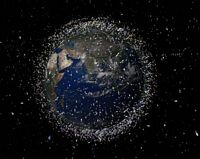 Yes, it’s true, LaserMotive now has a spiffy new motor for their climber.
Yes, it’s true, LaserMotive now has a spiffy new motor for their climber.
Check out their blog post for a picture of the motor and some more details…
Note that they are also looking for alternative uses for this motor. Hmm… I think they should use it to power a robot that automatically pumps out draft beer…
Here’s one that pours canned beer from (presumably) a mini-fridge inside of it. I love how it pours the can in three different phases so that it (almost) doesn’t allow the head to overspill. It would have been even cooler if they would have had a knife go across the top of the glass to knock off the excess head 🙂 Of course, one would die of thirst waiting for this thing to finish…
[youtube]http://www.youtube.com/watch?v=2tXmGYk_A_c[/youtube]
.
Here’s one that does bottled beer. It has a unique (and unsanitary) way of ensuring that the head doesn’t spill over the top of the glass. I love the little ‘swirl’ action at the end to ensure it gets every last drop…
[youtube]http://www.youtube.com/watch?v=3Gpnma4Rs-I&feature=related[/youtube]
.
And here’s a ‘lazy robot’ – you have to hold the glass, but it will ring the bell and want a tip from you…
[youtube]http://www.youtube.com/watch?v=L9rbgttrbxU[/youtube]
.
And finally, for you Pownce fans (may it rest in peace), the INEBRIATOR!!!
[youtube]http://www.youtube.com/watch?v=SN-bOjLZLgo[/youtube]
.
Draft beer, gentlemen, think DRAFT beer. If you need help, this is the place to go…
[youtube]http://www.youtube.com/watch?v=HMDYMG-wa7E[/youtube]


 This
This